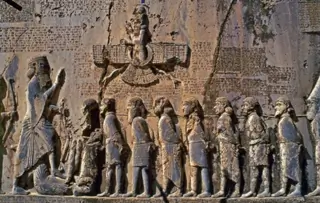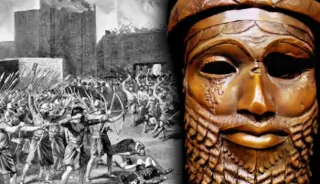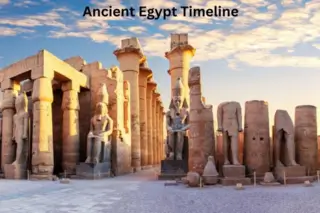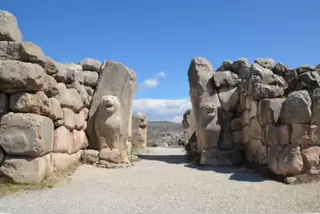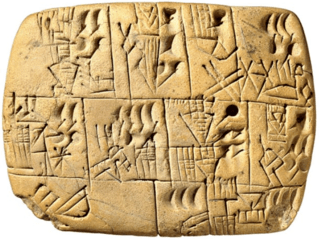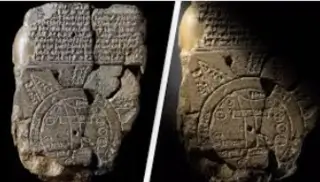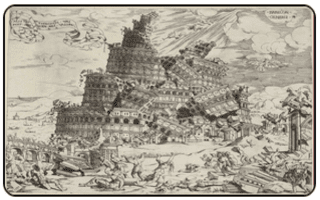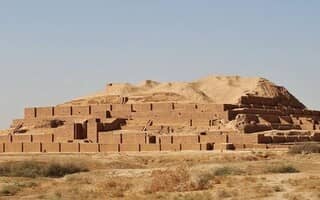Ancient History of The Middle East, Mesopotamië, & Elam. Tower of Babel
The Ancient Sumerians (circa 3000 BCE – 2000 BCE)
Ancient Sumer is considered by many historians as the first civilisation to ever exist.
The Sumerians are responsible for many of the modern concepts that take for granted today,
such as a writing system, a way to record information, large-scale agriculture, and irrigation systems.
They had a complex and fascinating culture that draws a lot of comparisons to the modern civilisations that we have today.
While they may be long gone, the Sumerians should always be remembered as the first nation to unite groups of people under one, unified banner.
Read more... »
The Akkadian Empire (circa 2334 BCE – 2154 BCE)
The Rise and Fall of the Akkadian Empire
Founded by Sargon the Great, the Akkadian Empire lasted for two centuries until it collapsed.
Located in Mesopotamia, the Akkadian Empire was the first long-lasting kingdom in history.
Lasting between 2334 BCE and 2154, the Empire eventually collapsed due to internal strife, famine, and external pressures.
Read more... »
Babylonians (circa 1894 BCE – 539 BCE)
What was the Babylonian civilization?
The Babylonian civilization, also known as Babylonia, was an ancient culture of the Near East
that existed between 2100 and 538 BC.
The Babylonians brought neighboring peoples under their rule and, twice in their history, managed to build an empire that controlled the entire region.
The major city, Babylon, was located on the banks of the Euphrates River in Lower Mesopotamia, Asia.
Read more... »
Egyptians (circa 3100 BCE – 30 BCE)
Ancient Egypt refers to one of the world’s most enduring and fascinating civilizations that flourished along the Nile River in Northeast Africa.
Spanning over thousands of years, from around 3100 BCE to 30 BCE, ancient Egypt witnessed remarkable achievements in art, architecture, religion, government, and culture.
The civilization emerged during the Predynastic Period when small agricultural communities settled along the Nile. It reached its pinnacle during the Old Kingdom, known for the construction of magnificent pyramids at Giza.
Read more... »
Hittites (circa 1600 BCE – 1180 BCE) )
The Hittites occupied the ancient region of Anatolia (also known as Asia Minor, modern-day Turkey) prior to 1700 BCE, developed a culture apparently from the indigenous Hatti (and possibly the Hurrian) people, and expanded their territories into an empire which rivaled, and threatened, the established nation of Egypt.
They are repeatedly mentioned throughout the Hebrew Tanakh (also known as the Christian Old Testament) as the adversaries of the Israelites and their god.
Read more... »
Phoenicians (circa 1500 BCE – 300 BCE)
The Phoenicians: while their homeland was primarily located in present-day Lebanon, their reach extended throughout the Mediterranean, stretching all the way from the Middle East and Cyprus to the Iberian Peninsula. They were part of the ancient Phoenician civilization, which flourished between 1550 and 300 BCE. Their city-states produced many prominent merchants, traders, and colonizers, being located along the naval trading routes. Read more... »
Top 11 Inventions and Discoveries of Mesopotamia
The Sumerians developed the first form of writing called “cuneiform” to maintain business records. It was mostly used in trade, where merchants recorded information such as the amount of grain traded. The Mesopotamians also used writing to record daily events like astronomy.
Cuneiform evolved as a simple pictograph. For instance, the pictograph for a horse might be a small image of a horse. The writer had to drag the tip of a stylus across wet clay to create a shape. It was hard to remember every character and it would take 12 years for a person to learn to write in cuneiform. Read more... »
The Babylonian Map of the World with Irving Finkel
The Babylonian map of the world is the oldest map of the world, in the world.
Written and inscribed on clay in Mesopotamia around 2,900-years-ago, it is, like so many cuneiform tablets, incomplete.
However, Irving Finkel and a particularly gifted student of his
Edith Horsley - managed to locate a missing piece of the map, slot it back into the cuneiform tablet, and from there set us all on journey through the somewhat mythical landscape of Mesopotamia to
find the final resting place of the ark.
![]() The Babylonial map of the world .. »
The Babylonial map of the world .. »
Tower of Babel (Part 5) Archaeological Evidence
In explaining the content of an inscription known as “Cuneiform Royal Inscriptions and Related Texts in the Schøyen Collection,” Owen Jarus comments, “In the inscription, Nebuchadnezzar talks about how he got people from all over the world to build the Marduk tower and a second ziggurat at Borsippa.”1) This is the oldest known image of a ziggurat, with the full text stating: Read more... »
OUR ORIGINS EXPLAINED BY GOD--What Was the First Language?
What Was the First Language?
Why Did God Confuse it?
Join students from OVER 90 countries that attend our online classes.
Here's the opening live Q&A session that launched our online video training. Almost a million people have sat in on this Bible teaching session. See the video... »
Elam
Elam was a region in the Near East corresponding to the modern-day provinces of Ilam and Khuzestan in southern Iran (though it also included part of modern-day southern Iraq) whose civilization spanned thousands of years from c. 3200 - c. 539 BCE.
The name comes from the Akkadian and Sumerian for “highlands” or “high country” while the Elamites referred to their land as Haltami (or Haltamti) which seems to have had the same meaning. Read more... »
The History of Israël
The history of Israël is one of persecution, struggle, oppression and survival. Long before Jacob became Israël, since the ancient beginnings of Genesis, the Jews, and later their tiny nation, has been in a constant state of survival. From the moment of Abraham's arrival in the land of Canaan,
God's people have been surrounded by enemies on all sides. Read more... »
Words significance in ancient Hebrew
Adam... » Eden... » Pray... » YHVH... »
Repent... » Love... » Elohim... » Heart... »
Tabernacle... » Grace... » Job... » Shalom... »
Satan... » Enoch... » Jerusalem... » Redeemer... »
Compassion... » Enemy... » Servant... » Calamity... »
Bible first words... » The origin of Hebrew... » Biblical family tree... »
